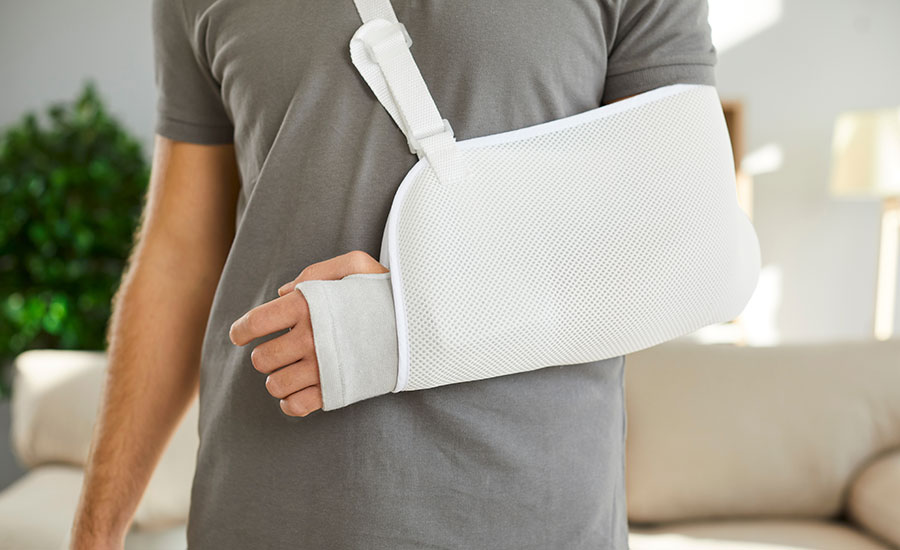
What Is Hip Preservation Surgery?
At OrthoEast, we provide 360 care, which means we are by your side to answer questions, explain what to expect and walk you through your recovery, from your first consultation to post-op checkups.

Meet Our Hip Preservation Specialists
Find a Specialist Near You
Get the care you deserve close to home at one of our New Jersey or New York Locations.
About Hip Preservation & Repair Surgery

Who Might Need Hip Preservation Surgery?
If you are experiencing hip discomfort that is impacting your quality of life or getting in the way of your hobbies, it might be time for hip preservation surgery or hip repair surgery.
If you are an athlete or you live an active lifestyle, hip preservation surgery may also be right for you, to help you maintain your hip joint function and avoid long-term joint damage.
If you’re seeking a pain management solution but you’re not sure whether surgery is right for you, schedule a consultation with our physicians at OrthoEast.
Hip preservation and repair procedures at OrthoEast are performed by board-certified physician Dr. Anthony J. Scilia — a leading orthopedic surgeon who specializes in the arthroscopic and reconstructive treatment of hip, shoulder, elbow and knee disorders in adult and pediatric patients.
Our entire team is dedicated to providing 360° care, which means we’ll be with you every step of the way. From your first consultation to follow-up appointments, questions, concerns and a personalized treatment plan, you’re in good hands at OrthoEast.
Conditions That May Require Hip Repair or Preservation Surgery
Common conditions that may require hip repair or preservation surgery include:
Common conditions that may require hip repair or preservation surgery include:
A proximal hamstring tear is a condition that occurs when the hamstring muscles (found along the back of your thigh, from your hip to below your knee) tear apart. Symptoms include sharp pain and/or a popping sound in your back or the upper part of your thigh.
A sports hernia, also known as athletic pubalgia, is a soft tissue injury that occurs when the muscles and tendons in the lower abdomen and groin area become strained or torn.
If left untreated, a sports hernia may develop into an inguinal hernia, where there will be a noticeable bulge in the hernia area that is painful.
When the gluteus medius muscle is strained extensively, it can lead to a partial or complete tear of the muscle, which is known as a gluteus medius tear.
Symptoms include pain and tenderness over the lateral aspect of the hip, which can be exacerbated with activities such as climbing stairs, running or prolonged sitting or walking.
Ischial bursitis is a condition that occurs when the bursa, a small fluid-filled sac that separates the buttocks muscle from the underlying bone, becomes inflamed.
Symptoms include swelling in the hip or lower buttock area, tenderness in the upper thigh and lower buttock, and pain when stretching the hip or buttock.
A hip flexor tendon rupture is a condition caused by forcefully extending the hip with the knee flexed. Patients who suffer from this condition may experience a popping sensation along with muscle weakness, pain and swelling.
Symptoms include tenderness, swelling or bruising in the hip or thig area, muscle spasms in the thigh or hip, and pain when stretching the hip muscles.
A hip labral tear occurs when the hip labrum (the cartilage that surrounds the outside rim of the hip joint socket) is injured.
Symptoms include a hip joint that makes a clicking sound, groin pain and stiffness or limited range of motion in the hip joint.
Femoroacetabular Impingement (FAI) is a condition in which an extra bone grows on one or both of the bones that form the hip joint. As a result, the bones rub against each other, providing too much friction.
Symptoms include a clicking or popping sensation in the hip joint, and pain or stiffness in the hip during physical activity or after sitting for prolonged periods.
Deep gluteal space syndrome is a condition that occurs when the sciatic nerve in the sub-gluteal space becomes compressed or irritated.
Symptoms include pain, numbness, and tingling sensations in the buttock, hip, or back of the thigh, which can be aggravated by rotating the hip or sitting for prolonged periods.
A traumatic adductor tendon rupture is a condition that occurs when one or more of the tendons that attach the adductor muscles to the pubic bone in the groin area are partially or completely torn.
This condition typically occurs due to trauma while playing sports, such as soccer or football. Symptoms include swelling on the inside of the thigh and pain.
An external snapping hip is a condition that occurs when the iliotibial band, a thick band of tissue that runs from the hip to the knee, rubs against the outside of the hip joint, causing a snapping or popping sensation in the hip.
Symptoms include a snapping sensation around the hip joint that may cause pain.
Compared to an external snapping hip, an internal snapping hip is a condition that occurs when the iliopsoas tendon, a muscle and tendon that runs from the hip to the spine, rubs against the front of the hip joint.
The snapping sound might occur when you are swinging your legs, running, walking or getting up from a chair. Symptoms include tenderness and tightness over the iliopsoas tendon, and a snapping sound when extending or rotating the hip.
Greater trochanteric bursitis is a condition that occurs when the bursa, a small fluid-filled sac located near the greater trochanter of the femur bone in the hip, becomes inflamed or irritated.
This type of condition is more common than iliopsoas bursa.
Symptoms include pain on the outer side of the hip due to climbing the stairs or prolonged walking.
Surgical Procedures for Hip Preservation & Repair
At OrthoEast, our physicians take a personalized approach to ensure you receive the best possible care and a phenomenal outcome. We perform several different surgical procedures for hip preservation and repair, to reduce hip joint pain and prevent or delay the need for hip replacement surgery.
Each requiring general anesthesia, surgical procedures for hip preservation include:
At OrthoEast, our physicians take a personalized approach to ensure you receive the best possible care and a phenomenal outcome. We perform several different surgical procedures for hip preservation and repair, to reduce hip joint pain and prevent or delay the need for hip replacement surgery.
Each requiring general anesthesia, surgical procedures for hip preservation include:
Hip arthroscopy, also called a hip scope, is a minimally invasive procedure in which a physician uses surgical instruments and a small camera to diagnose and treat hip joint problems, such as labral tears and hip dysplasia and osteoarthritis.
How is hip arthroscopy performed?
First, your surgeon will make a small incision in your skin, then insert a narrow tube attached to a fiber-optic video camera into your hip joint. The view inside your joint is transmitted to a high-definition video monitor.
Periacetabular osteotomy (PAO) is a procedure that is used to treat both teenagers and young adults who suffer from hip dysplasia. During this surgery, the hip socket is repositioned to improve hip joint alignment and stability.
How is periacetabular osteotomy performed?
Your surgeon will make several incisions around your hip joint and reposition your hip socket to provide better coverage of the femoral head. Then, your hip joint will then be stabilized with screws or plates, and the incisions will be closed with stitches.
Femoroacetabular osteoplasty (FAO) is a procedure that is used to treat hip impingement.
Hip impingement is a condition that occurs when there is abnormal contact between the bones of the hip joint, resulting in pain and limited range of motion.
Femoroacetabular osteoplasty reshapes the bones of the hip joint to reduce friction and improve range of motion.
How is femoroacetabular osteoplasty performed?
Your surgeon will perform diagnostic arthroscopy to identify the extent of your bone overgrowth, then make small incisions around your hip joint and clean out the bone tissue using a surgical shaver.
To repair a damaged labrum, your surgeon may perform labral reconstruction using grafts. Finally, your surgeon will close the incisions with stitches or steri-strips.
Hip resurfacing is a procedure that is used to treat osteoarthritis, post-traumatic arthritis and avascular necrosis.
While the femoral head (the head of the thighbone) and the acetabulum (the damaged socket) are replaced with plastic, ceramic or metal components during a total hip replacement, the femoral head is instead trimmed and then capped with a metal covering during a hip resurfacing procedure.
Like a hip replacement, however, the cartilage and bone that are damaged inside the socket are removed.
How is hip resurfacing performed?
Your surgeon will make a single incision on the side of your hip to access your hip joint. Next, your surgeon will remove the damaged cartilage in your hip joint and reshape the head of your femur bone to fit a metal cap.
The metal cap is then placed on the reshaped femoral head, and a metal cup is implanted in the hip socket to create a new joint surface. Finally, your surgeon will close your incision using stitches or steri-strips.
Core decompression is a procedure that is used to treat early-stage avascular necrosis, a condition that results in the temporary or permanent loss of blood supply to the bone. This procedure is designed to relieve pressure on the affected bone and promote new bone growth.
How is core decompression performed?
Your surgeon will make one or more small incisions on your hip. Next, the dead bone will be removed. Your surgeon will then insert bone and blood vessels from your fibula to allow new bone to grow. Finally, your surgeon will close your incision using stitches or steri-strips.
After core decompression, you might need to undergo a period of rehabilitation and physical therapy to speed up your recovery and improve hip function.
How Long Does Hip Preservation Surgery Take?
The duration of your hip preservation surgery will depend on several factors, such as the complexity of your condition and the exact procedure you undergo.
In most cases, hip preservation surgery can take anywhere from one to four hours.
Your physician at OrthoEast will go over all the details of your surgery with you, including how long the procedure will take and what to expect. Our compassionate team will be with you every step of the way, championing and supporting you along the road to recovery.
How To Prepare for Hip Preservation Surgery
If you’re feeling nervous about hip preservation surgery, we understand. That’s why our OrthoEast team is here to answer your questions and put your concerns to rest.
We provide personalized treatment plans to help you find relief from hip pain and get back to the daily activities you enjoy.
To prepare for hip preservation surgery:
- Talk to your doctor: Feeling a bit jittery about your procedure? Your doctor is the best source of information about your upcoming hip preservation surgery. Your doctor will provide you with all the details and answer any questions you may have to put your mind at ease, from what will be done during the procedure and what to expect after the surgery.
- Follow pre-surgery instructions: Your doctor will provide you with instructions to follow, such as avoiding food and liquids once the clock strikes midnight, before your procedure.
- Quit smoking: If you smoke, ditch the nicotine because it can affect your blood flow, slow down your recovery and cause further complications.
- Ask for help with post-surgery care: You’ll need to rest and recover after your surgery, so make sure you have someone who can help you with daily activities like cooking, driving, cleaning and grocery shopping.
- Sleep on the first floor: While this isn’t a requirement, moving your bed to the first floor of your home (or setting up a makeshift bed) will reduce the need to climb a flight of stairs.
- Get your home ready: Make your home a safe and comfortable place to recover by rearranging your living space to accommodate your mobility limitations.
- Attend pre-operative appointments: Attend all pre-operative appointments scheduled by your surgeon, such as pre-operative physical therapy or consultations with your anesthesiologist.
- Follow medication instructions: Your doctor will advise you to stop taking certain medications before your surgery.
How To Recover From Hip Preservation Surgery
Recovering from hip preservation surgery involves plenty of rest, physical therapy and lifestyle modifications.
To make your recovery as seamless as possible, here’s an overview of what you can expect after your hip preservation surgery:
Recovering from hip preservation surgery involves plenty of rest, physical therapy and lifestyle modifications.
To make your recovery as seamless as possible, here’s an overview of what you can expect after your hip preservation surgery:
Rest is important for healing. Take it easy and avoid strenuous activities such as jogging or running for the first few weeks after surgery. Depending on the procedure you undergo, we’ll walk you through what your rest and recovery process will look like.
You may need to use crutches or a walker to get around for the first few weeks after your operation. Assistive devices can help you avoid putting too much weight on your hip before it’s healed.
Physical therapy will help you regain motion and strength in your hip. Our team will work with you to recommend a personalized care plan that’s tailored to your condition and recovery goals, based on your age, activity level and overall health.
After surgery, you’ll need to give your incision some TLC to help prevent scarring and lower the risk of infection.
To care for your incision:
- Change the original dressing after two days (or as advised by your physician)
- Wash your hands with soap and water
- Carefully remove the dressing
- Soak clean gauze with saline and wipe from one end of the incision to the other
- Dry your incision using clean and dry gauze
- Inspect your wound for signs of infection and contact your doctor if you notice pus or other signs
- Apply new dressings as directed
After hip preservation surgery, it is normal to experience pain and discomfort in your hip area.
Our board-certified and fellowship-trained specialists will be part of your recovery journey. Your physician will work closely with our orthopedic specialists to offer injections, medications or other advanced interventional therapies.
A balanced diet will help improve the recovery process so you can get back to the activities you love, pain-free. Our team at OrthoEast will walk you through foods to eat and foods to avoid post surgery.
Proper hydration is key for the body’s natural healing process. Dehydration can increase the risk of complications post surgery, such as blood clots.
Drink eight 8-ounce glasses of water each day to prevent complications and promote healing,
Light exercises after hip preservation surgery can help you restore mobility, strengthen your muscles, reduce pain and discomfort and improve balance.
Our specialists typically recommend light core strength exercises like yoga posts to help re-educate your lower abdominals. Talk to our team about what exercises and stretches are safe to perform after your surgery.
Recovery takes time, and it’s important not to rush back into your normal routine too quickly.
If you undergo a hip arthroscopy, full recovery time will be around six weeks. For periacetabular osteotomy (PAO), you can expect four to six months of recovery.
Regardless of the timeline, our team at OrthoEast will provide continual support throughout your healing journey.
Your doctor will provide you with instructions to follow for post-op care. If you experienced any new symptoms or have concerns about your recovery, our OrthoEast specialists are just one call away.
Alternatives to Hip Preservation Surgery
Your comfort and wellbeing are our top priority, and we will work closely with you and your loved ones to ensure that you have all the information you need for your treatment.
If you’re not ready for hip preservation or hip repair surgery, physical therapy and lifestyle modifications may be able to help relieve your symptoms and alleviate pain.
- Physical therapy can be an effective treatment option for hip conditions in the early stages. It can improve hip strength, flexibility, and range of motion, and can help reduce pain.
- Lifestyle modifications such as weight loss and altering your activity levels can help reduce stress on your hip joint and improve symptoms.
At OrthoEast, we will help you reduce your pain and regain as much of your movement — and your life — as possible. Get a clear diagnosis, along with the best possible treatment and results from board-certified physicians at OrthoEast.










